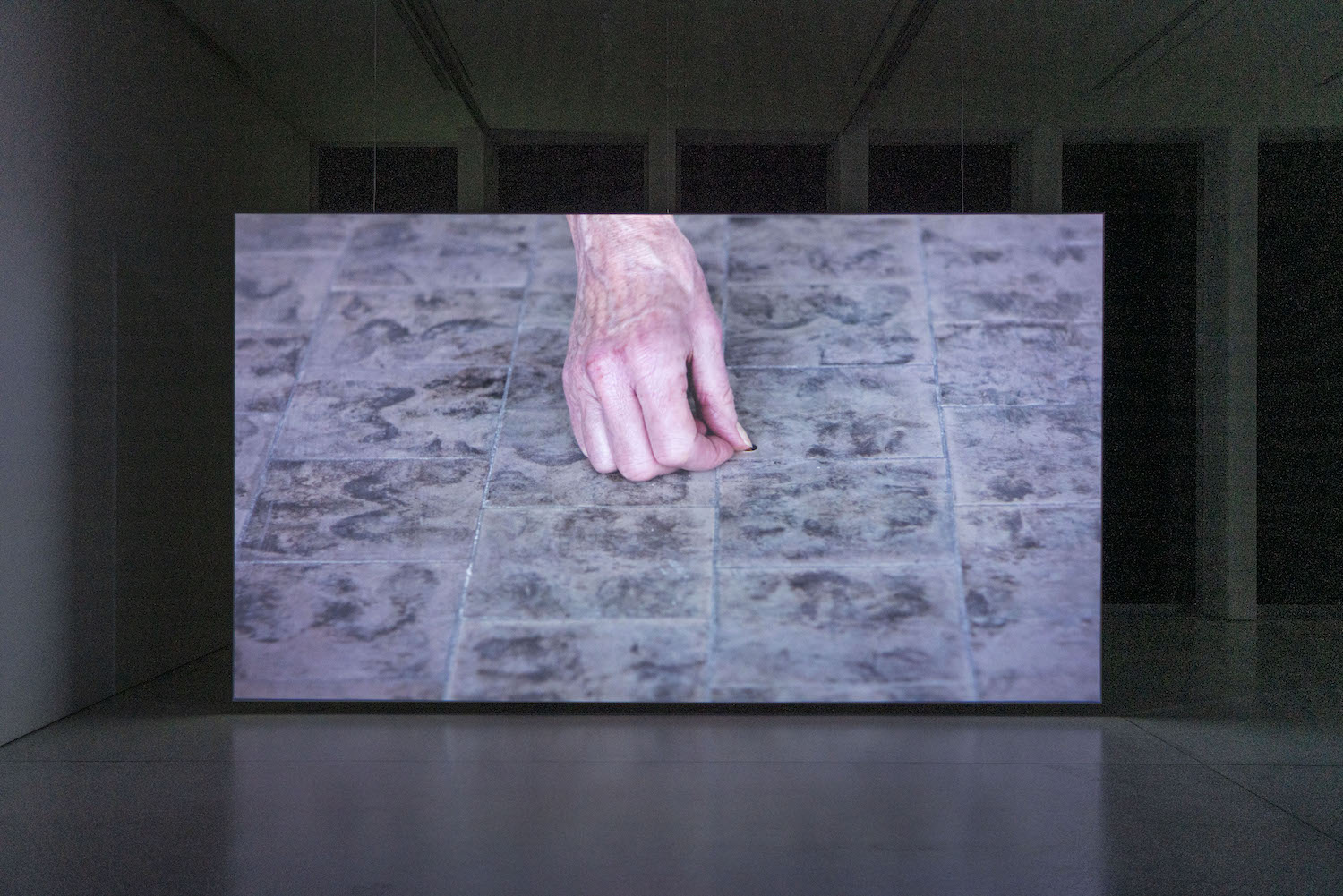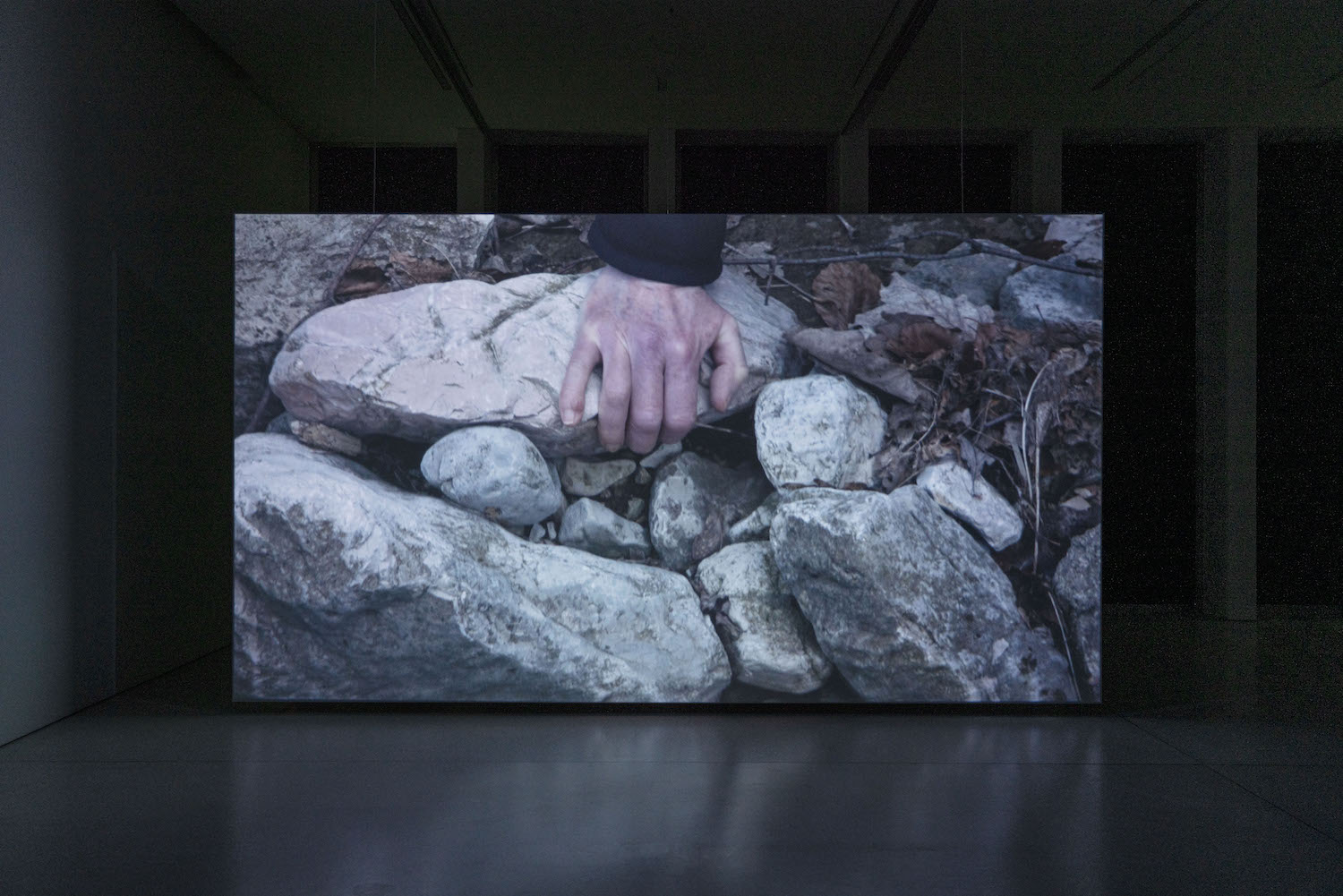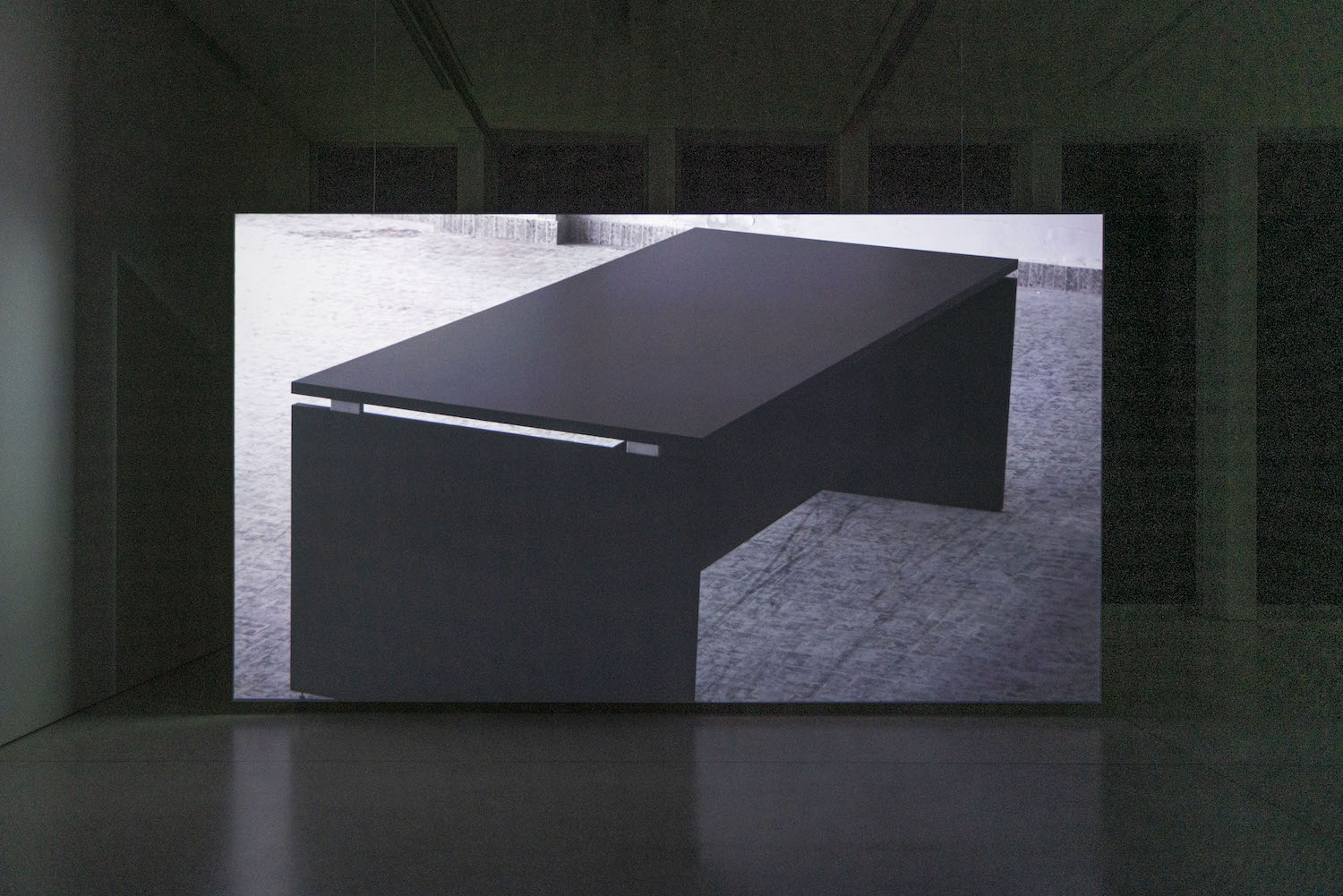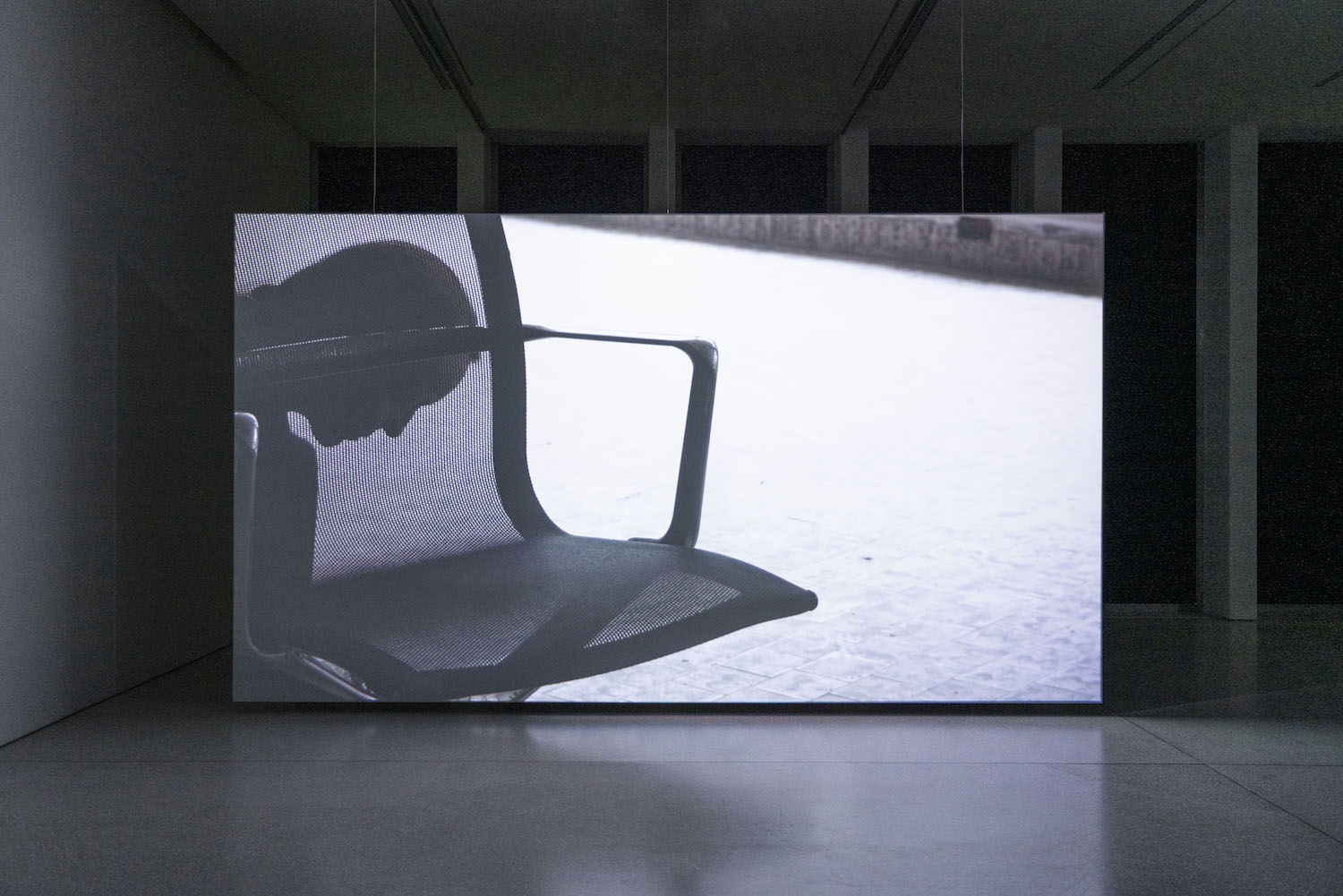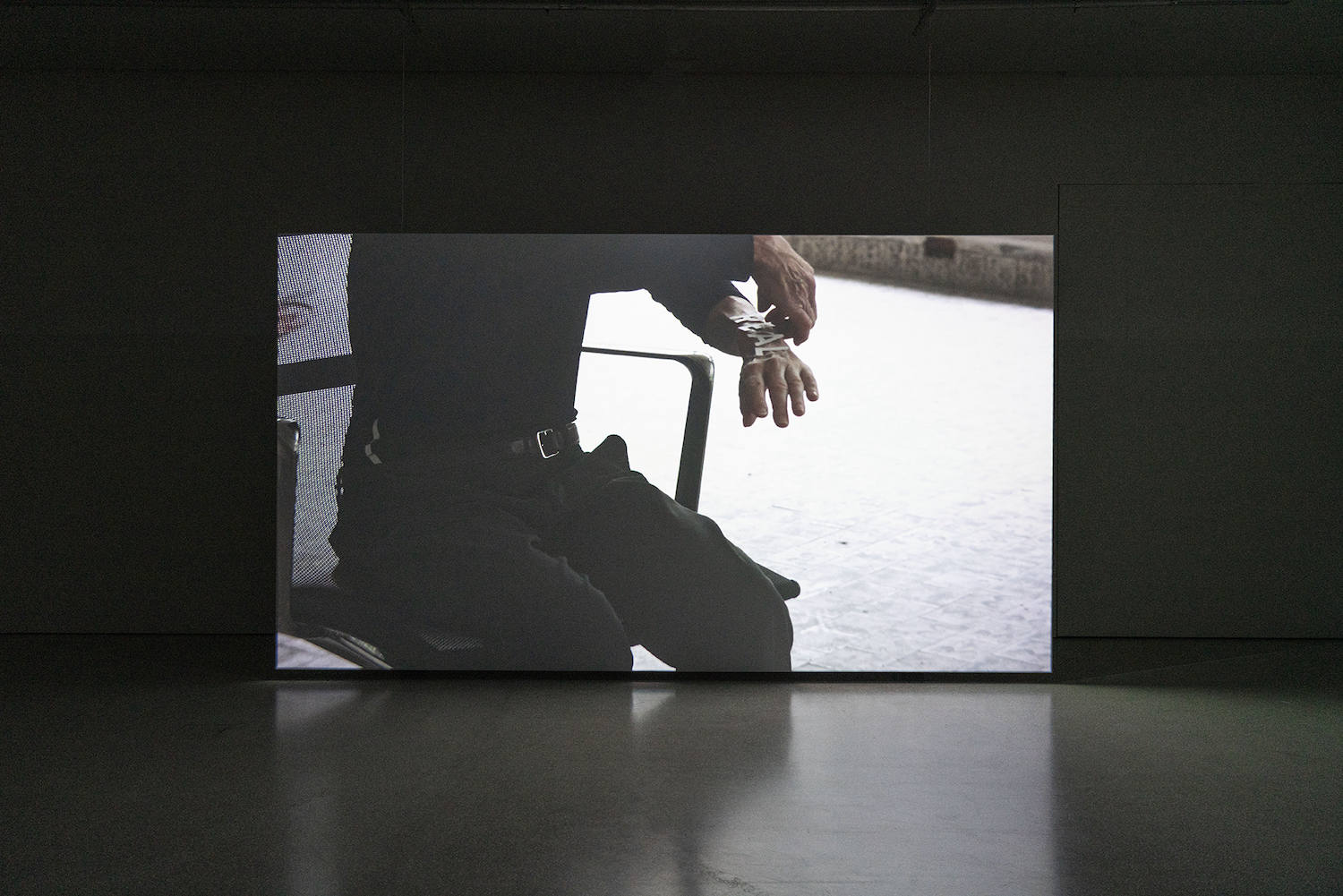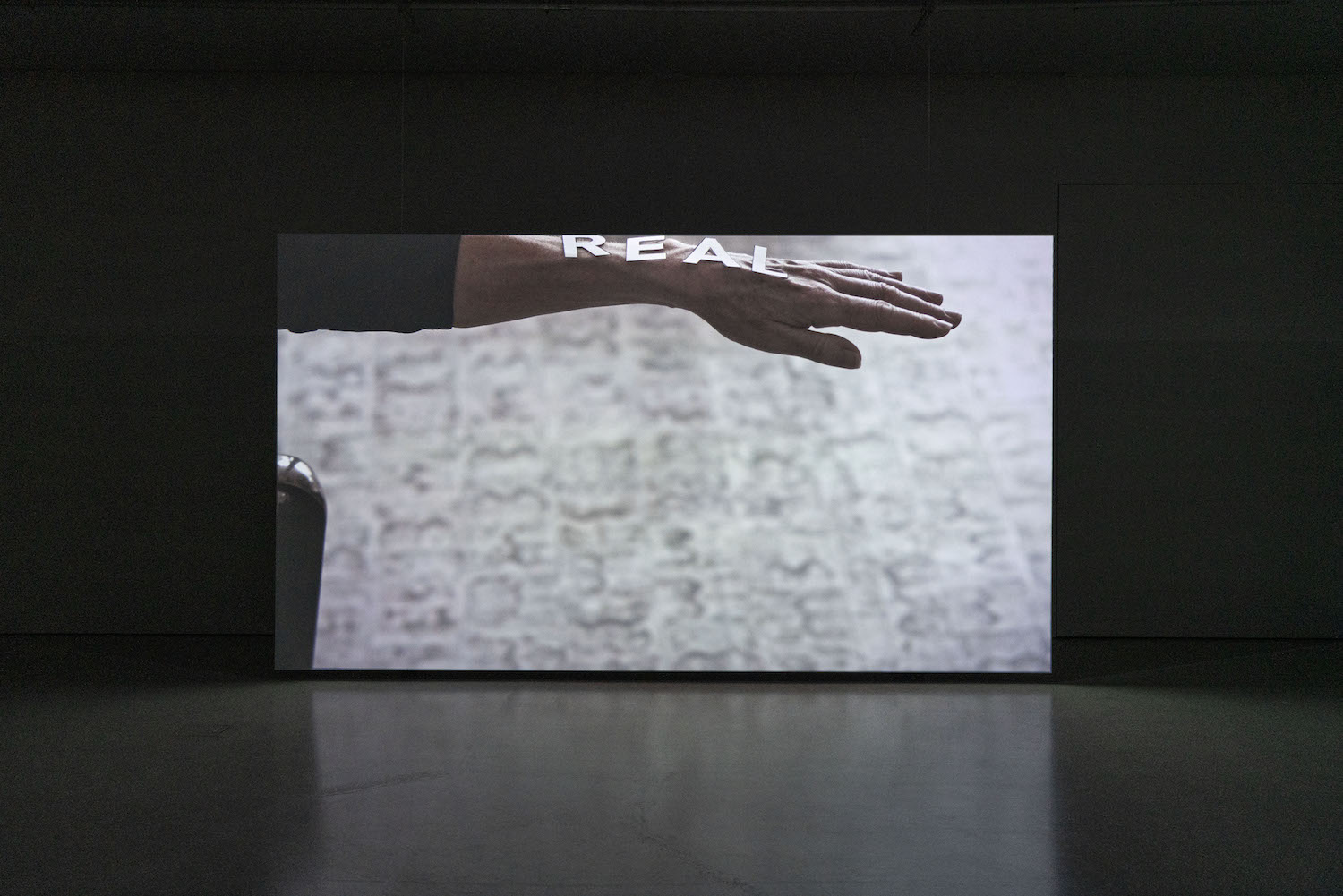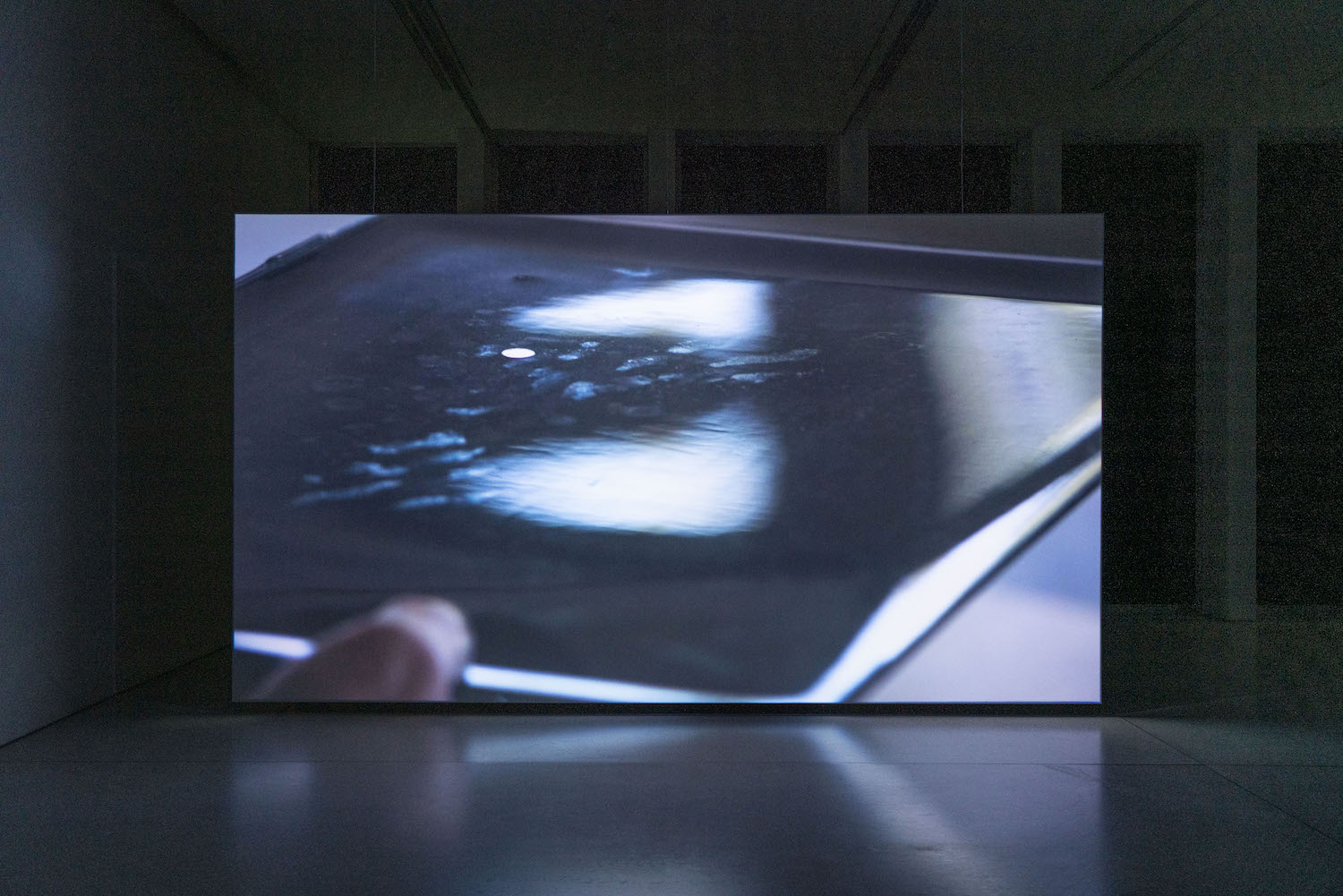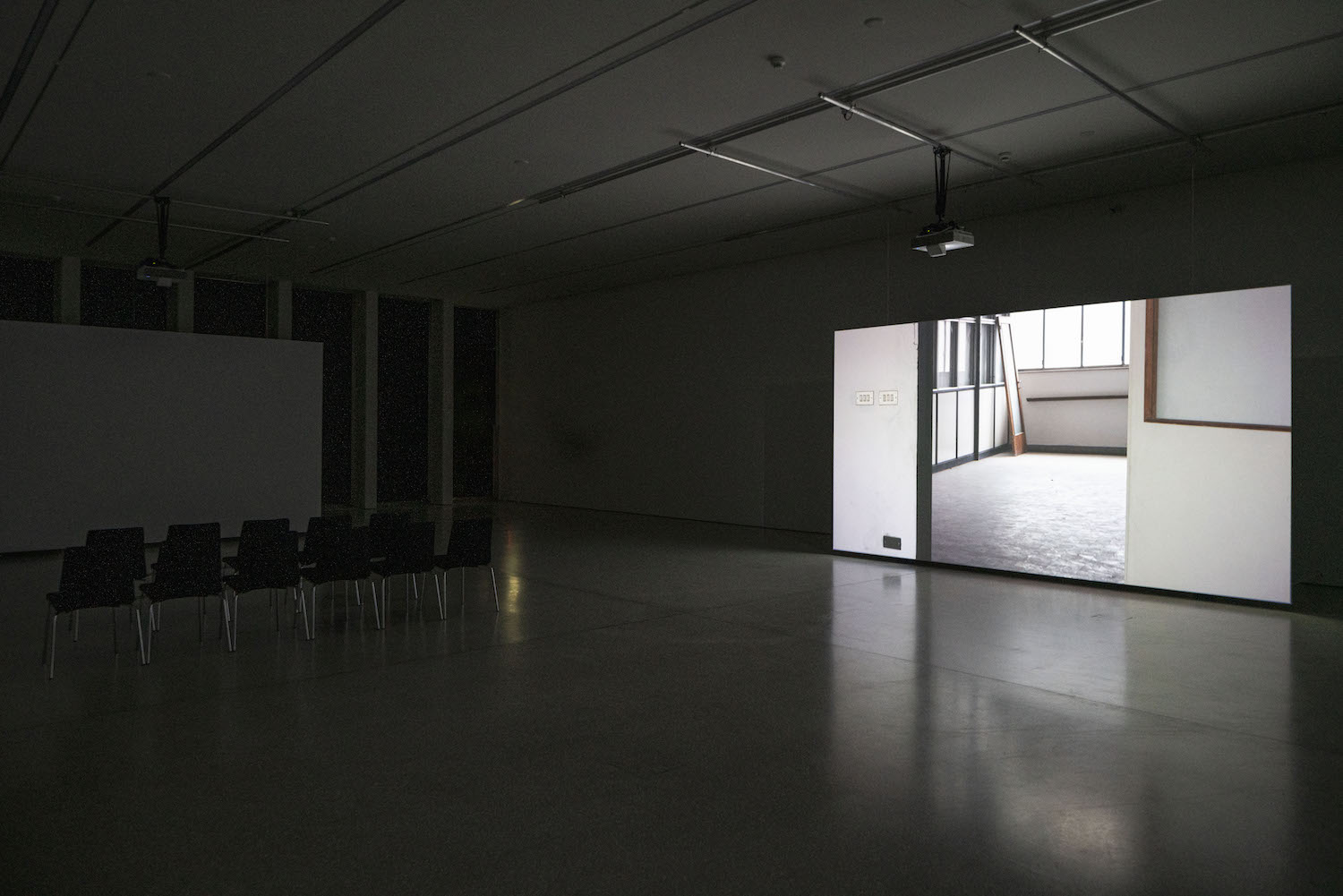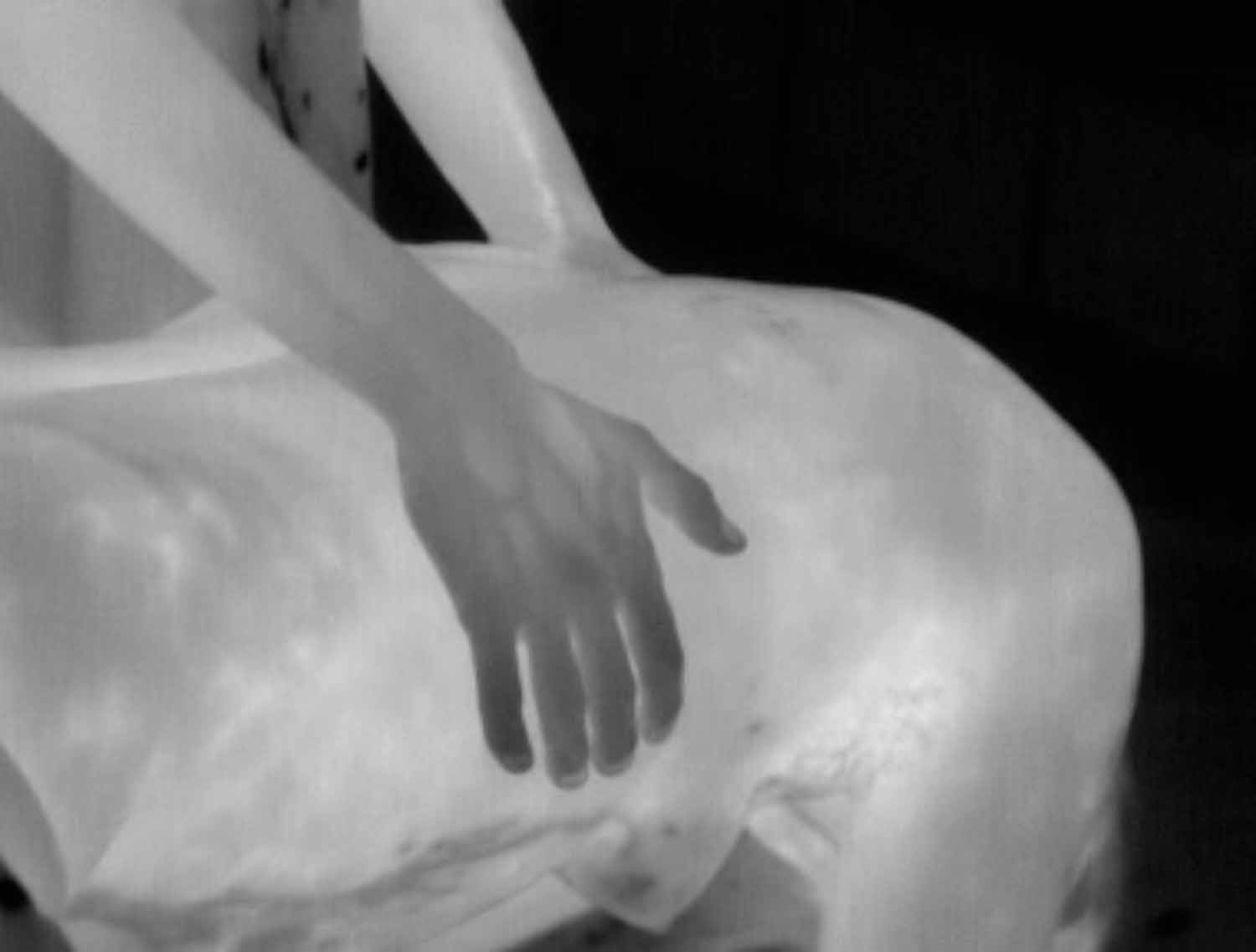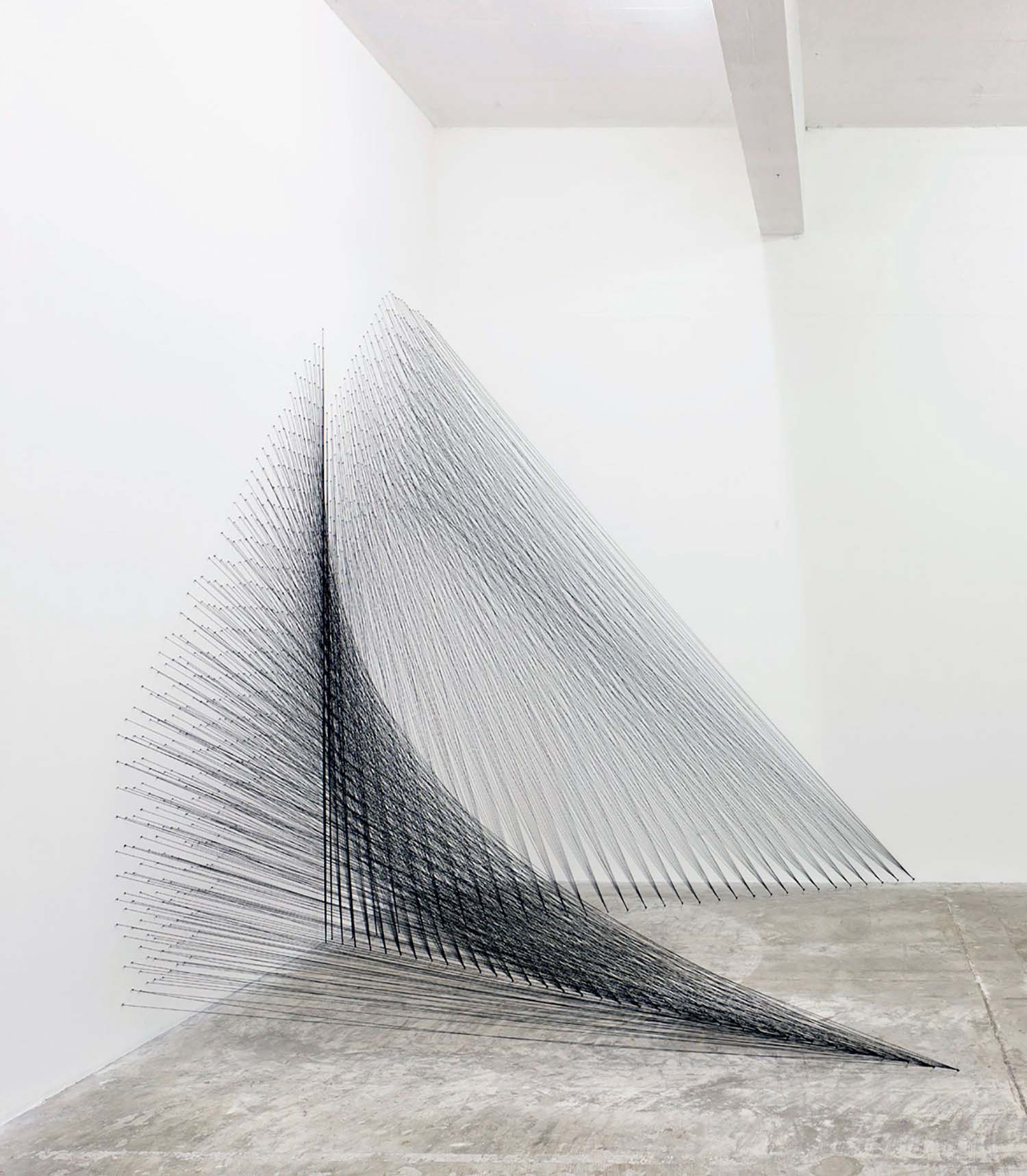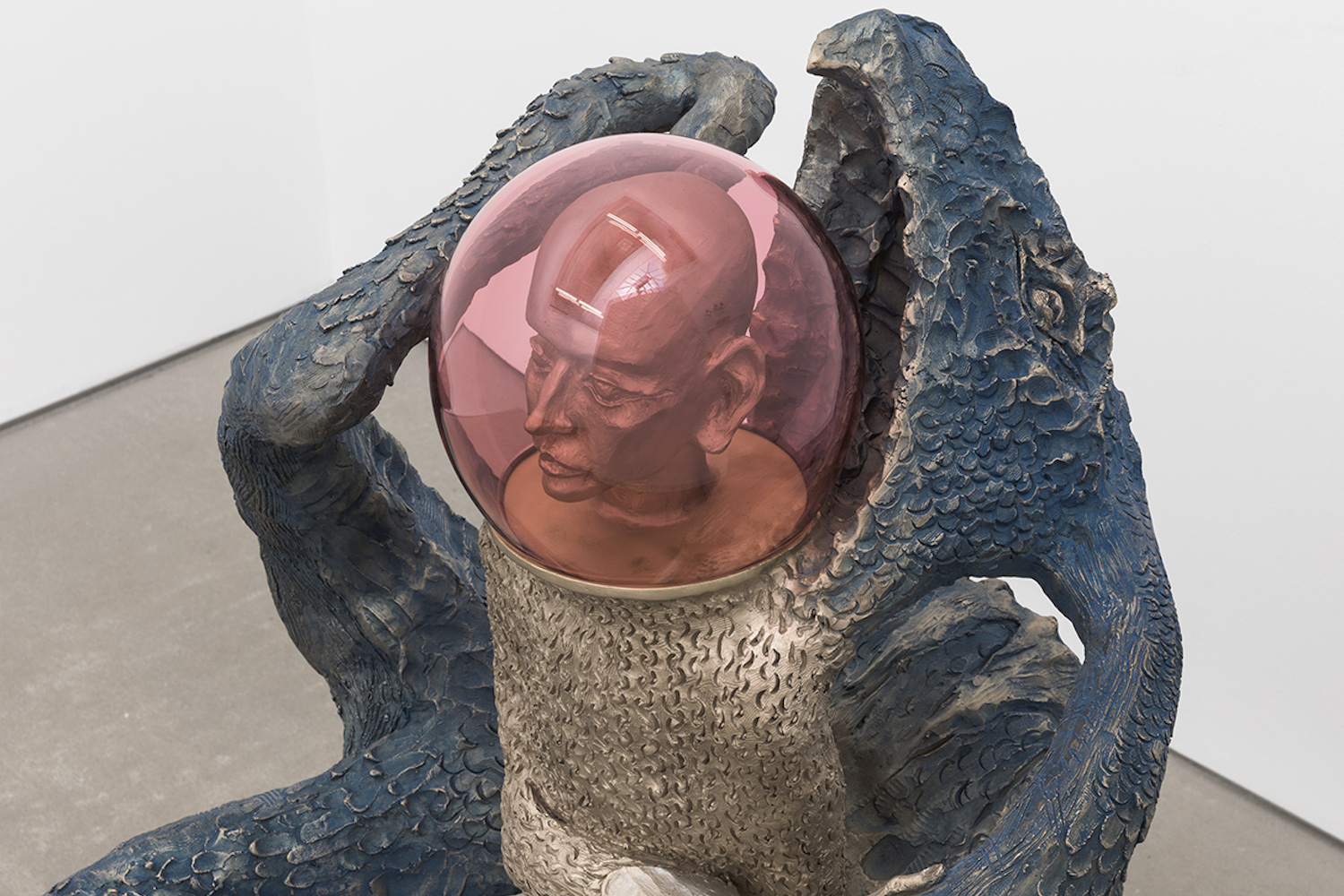For Marie Cool Fabio Balducci, the exhibition is a test. When they mount an exhibition in the institutional spaces of the museum or the gallery, they do so in the margins — not unlike the video sequence in which the letters “R.E.A.L.” are slowly projected across the surface of an outstretched arm. Their practice often addresses inadequacy and even failure. One might suggest that their work, based on ritual (embodied or delegated in the form of live installations), is an instigation of crisis in the rationality of the institutions to which they are invited, without, that is, renouncing the institution itself as a space they can briefly occupy as best they can. It is rather with this unease in mind or in response to the forbidding qualities of the spaces in which they perform that Marie Cool Fabio Balducci intervene with poise. They deploy in adverse territory precise, calculated gestures, drawn from the visual, physical, and material experiences of their daily lives. The exhibition thus represents the moment when these gestures appear in public with all the force of a defiant attitude.
The artists’ response to the invitation from the Museum Cantonal des Beaux-Arts in Lausanne to produce a new work initially took the form of a proposal for the museum to acquire a source of drinking water on land made available to the public. As the artist described it, “The idea consists in acquiring a plot of land with a source of drinking water, a world within the world, a ‘garden’ in the sense of a ‘place’ which remains within the public domain, available to the community […] so that the source becomes part of the museum’s collection, protected as a lost paradise or bygone world.” After several months of investigation, in which the artists and the museum’s administration examined the possibility of acquiring rights to land outside the confines of the museum, the project dried up due to insufficient resources. It thus crystallized into an allegory of the ebb and flux of the source, henceforth suspended in its status as an unrealized concept and a resulting series of official documents.
In order to describe the nature of time which, for each individual, merges with his or her inner life, Henri Bergson speaks of “a self-sufficient flow or passage.”1 He thus distinguishes between measurable time and indivisible duration, the latter being the continuation of what is no longer in what is: “We cannot conceive a time without imagining it as perceived and lived. Duration therefore implies consciousness.”2 The time that lasts is not measurable, and in order to demonstrate his principle Bergson describes a concrete experience:
“If I draw my finger across a sheet of paper without looking at it, the motion I perform is, perceived from within, a continuity of consciousness, something of my own flow, in a word, duration. If I now open my eyes, I see that my finger is tracing on the sheet of paper a line that is preserved, where all is juxtaposition and no longer succession; this is the unfolded, which is the record of the result of motion, and which will be its symbol as well.”3
During the living environments that Marie Cool Fabio Balducci create, it is not uncommon to see them or their delegates manipulate trivial objects (office equipment) or everyday materials (cotton, paper, etc.). These “durational” sequences of artistic movements echo Bergson’s work of popularizing metaphysical concepts such as duration and simultaneity through images of a river, a glass of sweetened water, a shooting star, etc. Where the artists and the philosopher concur is in the demonstration of duration as a lived passage from one state to another, which at the same time remains irreducible to either. Our analytical intellect produces spatialized time, time reduced to space, an order of succession, of successive states. Duration is not space; it is the very continuity from one moment to the next, which is to say that the next moment is not the repetition of the previous one. The previous instant continues into the next. If we attempt to slice the interior duration, which the artists envisage, not unlike the philosopher, through the body’s movement and the trace it leaves, it is as if we suddenly tried to pass a knife through a flame. The temporal sequence can be divided once it has unfolded, but not in the moment of its unfolding. The artists’ proposal to acquire a source of fresh drinking water was stemmed by the museum in the form of a continuous loop of the second chapter of the artist’s film in progress, made over the course of several years: Dai campi all’elica (From Fields to Propeller). The looped sequence begins with the image of Marie Cool’s hand pressing down on a patch of soil, while Fabio Balducci’s voiceover appeals off-camera to the gaze: “You see how the Maximum in its entirety is perfectly present within everything, in a simple and indivisible way, because it is the infinite center…”4 Everything about the film resists a rational, authoritative point of view, centered at eye level, which would otherwise divide the landscape into a hierarchy of high and low values analogous to the pictorial genres of museum classification. In contrast, it is the organic horizon, guided by the hand, in a duration aligned with that of the stars, which punctuates the montage of events inscribed in the filmic material. Thus, reinvigorated by the movement of the film loop, the allegory of the source invites the viewer to see the work as a form of water damage in the heart of the newly inaugurated museum. For Marie Cool Fabio Balducci, it is vital not to abandon the hope of transforming the museum as an institution still encumbered by the work of mourning creativity under the pretext that heaven (posterity) prevails after death. On the contrary, life can flow in the present.

